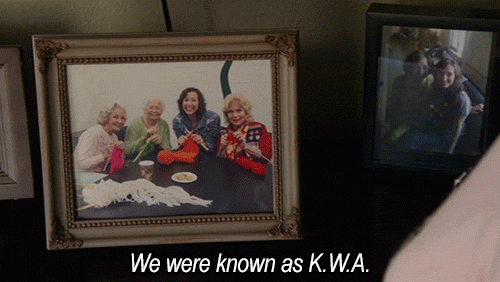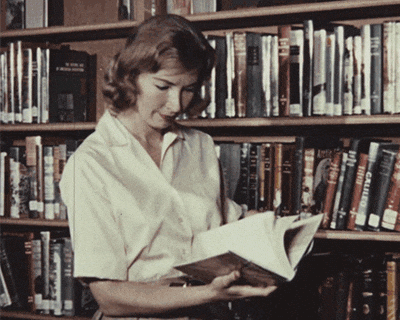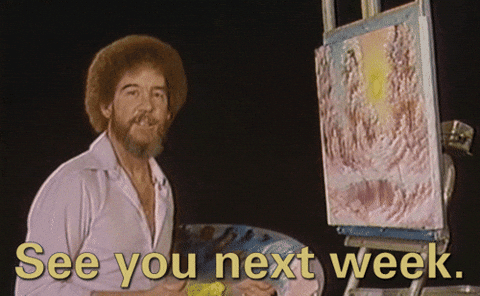Craft, Trade, Art, and Everything Along The Way, Part 1
Some scattered musings on what makes craft art and art craft...
Many years ago, when I was pregnant with one of my babies (I don't recall which one), I took a little crochet project with me to a doctor's appointment.
It's kind of odd that I was engaged in a crochet project at all at that point. I suspect I was pregnant with my first, because that was really the only pregnancy where I had any time for indulging in fiber hobbies. There was a long stretch of time when I didn't do anything besides feed children, change diapers, and fold laundry.
In any event, I was working some kind of thread crochet project in the waiting room, and an older woman asked me about it. We chatted for a minute or two, and she said, "it's a dying art. People just don't crochet much anymore."
I think about that comment a lot, because if that was sometime between 1999 and 2005, things have changed quite a bit since then. The fiber arts are everywhere now. Portland's Rose City Yarn Crawl, an event that the Bestie and I indulged in several times, just finished its 16th crawl. There are fiber festivals all over the country now where fiber aficionados can see the entire fiber creation ecosystem--from sheep and goats to raw wool to spinning wheels to hand-dyed yarn. While maintaining retail space has been tough for these kinds of stores, especially in the wake of COVID, a lot of them found a second life online. And for those of us who have to look up how to do a Kitchener stitch every single time, there is no shortage of "how to" videos on YouTube.
I rekindled my own affection for the fiber arts around 2012, about the same time that I had my long, dark night of the soul and went dark online. Knitting and crocheting helped me manage my anxiety through that period and gave me something to retreat to that didn't feel useless and mind-numbing, like playing computer solitaire. I took my knitting everywhere for a long time, and I found that it gave me, an introvert, an easy way to engage in conversation with a whole tribe of people I didn't know existed.
But I never considered it an art.
A Modern Take on an Old Story
I've been thinking a lot lately about the line between art and craft. This is not a new debate by any stretch, nor are these new thoughts for me. I've been toying with these ideas off and on probably since at least my early 20s, when I really started to write in earnest. What put me onto this subject right now was my recent book club project; I've been slowly reading through Circe, by Madeline Miller, and posting my thoughts over on Substack for others to read and contribute to. (If you haven't subscribed, check it out.)
In the second section of the book, Circe has a romantic interlude with the craftsman Daedalus. When Circe leaves to go back to her island, Daedalus gives her a loom he made. Much is made of the fact that the loom is as beautiful as it is useful. Circe reflects on the loom and her weaving:
It stands near my hearth, and has even found its way into the songs. Perhaps that is no surprise, poets like such symmetries: Witch Circe skilled at spinning spells and threads alike, at weaving charms and cloths. Who am I to spoil an easy hexameter? But any wonder in my cloth comes from that loom and the mortal who made it.
It was here that I started thinking about art and craft. Circe knows she is a powerful witch. She makes charms and spells unique to her, things that even her siblings can't do or won't bother to figure out. And while there is definitely an aspect of crafting to her witchcraft (I mean, it's in the word), if she didn't have the actual power through her divinity, she'd just be an herbalist of some kind.
But when it comes to her weaving, she doesn't seem to see things the same way. She creates dyes and weaves cloth, but she doesn't seem to attribute any particular uniqueness to her cloths. In fact, she gives all credit to the loom and its builder.
There are a lot of different ideas about art vs. craft, and they all have a lot of merit. When I posted about my thoughts, a couple of people suggested there is no line between the two and cited cultural perspectives from the Native American cultures of the American Southwest and similar thinking from Japanese culture.
So is there a line? And if so, where is it?
The Etymology of It All
Sometimes when I start philosophizing about these kinds of things, I like to go back in time and find out where we got our words for various things.
According to the Online Etymology Dictionary, "craft" comes down to us along various Germanic and Old English pathways. It originally meant "power, physical strength, might," but evolved into both "trade, handicraft, employment requiring special skill or dexterity" and "something built or made" in Old English.
The word "trade" is really interesting. It was once related to the word "tread" in the 14th Century--as in "path, track; course of action." By the 1540s, that definition was out of favor, and "trade" referred more to "one's habitual business" or "occupation, the craft or business one has learned and carries on for profit or a living."
And then there's "art," which is probably older than both of these other words and comes from the Latin "artem" or "ars," meaning "work of art; practical skill; a business, craft." This Latin root seems to be related to the Greek "artizein," meaning "to prepare," and the Sanskrit "rtih," meaning "manner, mode."
Y'all. I think I was wrong.
If I look at all of these various words and where they come from, I have to admit--our predecessors didn't seem to see much distinction between making a thing, making that thing prettier, and selling the pretty thing.
The craft is the art, and the art is the craft, and engaging in trade around that craft is perfectly fine.
The Humanity of It All
It's here that I have to step back for a minute and inject a bit of my worldview.
I have long said that everyone is creative. I have gently scolded people for saying they "aren't creative," because I think that reveals a misunderstanding of both what we are as humans and of what we do every day. I believe that we are created in the image of a Creator, a God who is infinitely creative, and therefore as image-bearers of that God, we are imbued with creativity.
But I don't think you have to believe in the God I believe in to see this. I mean, the wheel, the lightbulb, the loom, knitting needles and crochet hooks, the printing press--human history is just a long record of lazy people trying to do things faster and easier and using their ingenuity to propel us forward.
It's just really hard to see that creativity in ourselves--just like it's hard to see the "art" in our own work.
It is hard for me to see the art in my crochet or knit projects. To me, crocheting and knitting are skills I've learned that I can only apply because someone more artistic and creative than I am managed to write patterns that I can follow.
But as I think about how my skill has grown over the years, I have to admit--there is some art to it.
I've learned new techniques that have improved the evenness of my stitches and the quality of my finished products. I've become braver about altering patterns to suit my own preferences. I've definitely put my own touches on my work--sometimes to compensate for mistakes, other times to accommodate a request from the recipient.
And I have to ask...
What if we're all artists?
If there's no line between craft and art, if we are all creative, then doesn't it stand to reason that at some level, we're all artists?
This is getting long, so I'm just going to leave it there for this week. I'll finish these thoughts next week.
In the meantime, I hope you all find some way to satisfy the Muse inside you.












This is beautifully thought out and presented, Amy. I think in some way or another, we are all artists. Writers, bakers, house painters, spreadsheet makers. We all have something in which we can create...contribute. Something that comes from within, a god-given talent if you will.